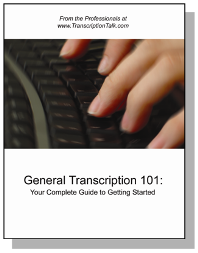I think the semicolon might be the most misunderstood piece of punctuation in the English language.
I'll never forget a couple of years ago when an editor for one of the companies I was contracting for accidentally hit "Reply All" to an e-mail, effectively copying all of the ICs, and sent out a nasty comment about how the first thing he did when editing a transcript was to do a Find and Replace to remove all of the semicolons.
Unfortunately, while I was offended because I felt that it was an insult to those of us who do use semicolons correctly, I have seen many examples of this incorrect usage and can understand his frustrations as well.
Just as the key to eliminating run-on sentences is to identify independent or stand-alone clauses, identifying these is also key for proper semicolon usage.
The most basic usage of a semicolon is to join independent clauses in the absence of a conjunction. We use it when two sentences should be given equal weight and emphasis:
The dog was hungry. The cat was tired.
In this case, we could use a semicolon between the two sentences, changing the second "the" to lower case:
The dog was hungry; the cat was tired.
Additionally, semicolons can also be used when the second independent clause begins with a coordinating conjunction, such as however, otherwise, et cetera:
The dog was hungry; however, the cat was tired.
It's important to note that if there was a conjunction between these two sentences, a semicolon would NOT be used.
INCORRECT:
The dog was hungry; and the cat was tired.
CORRECT:
The dog was hungry, and the cat was tired
More on the proper use of a semicolon to come!
Thursday, May 1, 2008
Demystifying the Semicolon, Part 1
Posted by Mandi at 9:21 AM
Labels: grammar and spelling, punctuation
Subscribe to:
Post Comments (Atom)









































0 Comments:
Post a Comment